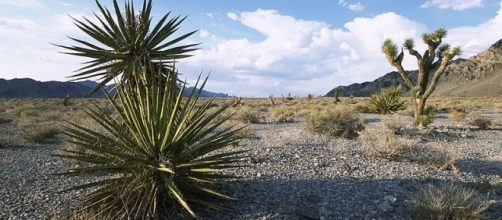Deserts usually mean sand with surroundings devoid of vegetation and little or no signs of animals or birds due to the absence of water. However, the Mojave Desert in California is unlike other deserts. It is an exception because it is full of life. There are tortoises and bighorn sheep along with wildflower blooms and Joshua trees and is the abode of many plants and animals that are unique to the state.
These are all under threat because a water extraction project is expected to come up in the middle of the Mojave Desert. Under the project, water would be drained from the aquifers located in different valleys and would be sent to meet the requirements of Los Angeles County.
If that materializes, it would lead to an environmental disaster.
The Mojave Desert is vibrant
Los Angeles Times reports that the Mojave Desert is endowed with the gifts of Nature and boasts of a vibrant but fragile ecosystem. It has a variety of lifeforms that include both flora and fauna sustained by the large numbers of underground aquifers and springs that have been there for ages. These support all forms of life including local communities of Native American tribes. The desert generates thousands of jobs in a number of sectors. In fact, Mojave is a well-known tourist destination and brought in revenue of more than $150 million last year from tourism.
However, there are clouds on the horizon and unless action is taken to put on hold the extraction of water from the aquifers, it will be the making of an environmental disaster.
Extraction of the underground water would take its toll on the animal and plant life and disturb the ecological balance. If the glory of Mojave Desert is to be kept alive, aquifers must not be exploited.
Who will benefit?
On the face of it, Los Angeles needs water and groundwater from the Mojave is an option but decision makers must bear in mind the fact that such an action would destroy the ecology, displace the tortoises and bighorn sheep and the wildflowers will wither. The net result will be an environmental disaster.
The company that wants to undertake the work of taking groundwater from the Mojave to Los Angeles County and beyond has a long-term plan in mind. It proposes to drain 50,000 acre-feet of water every year for 50 years which is far in excess of the natural recharge rate of aquifers.
This is as per an independent analysis carried out by the U.S. Geological Survey.
Those who oppose the project have managed to keep it at bay for nearly two decades but, times have changed and the present administration appears to be more interested in assigning priority to corporate profits as compared to the environment. Therefore, in the long run, the effects will be felt on the Mojave Desert and the landmark might be lost forever. It may not happen overnight but the possibilities are certainly there.


